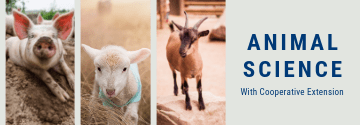Within a few short months Spring will soon be on our doorsteps. Though snow may still be on the ground and the soil still frozen solid, now is the time to start planning as to how you will plant your new stand of alfalfa.
During the 2020 Leading Dairy Producers Conference held in Wisconsin Dells, Wis., Deborah Samac, a research plant pathologist for the United States Department of Agriculture-Agricultural Research Service, gave these 10 tips to help establish a better alfalfa stand in 2020.
1. Plan ahead to avoid herbicide carryover. Even during wet weather it is important to be aware of the slow decay of some herbicides used on previous crops such as soybeans and corn.
Herbicide carryover is more commonly found in fields that were last planted to corn due to their longer herbicide residual period, according to Samac. Therefore, it is essential to look at herbicide labels to note their herbicide carryover length to avoid stunted alfalfa stands.
2. Select sites with good drainage. Known for not liking wet feet, alfalfa can be prone to seedling diseases if fields do not have adequate soil drainage. When planting fields to alfalfa, Samac suggests steering clear of fields that have heavy amounts of clay to avoid over saturation.
Another step in preventing overly wet fields is examining soil for hardpan, a hardened impervious layer, typically of clay, occurring in or below the soil and impairing drainage and plant growth.
“If you do have soil problems or standing water, be sure to investigate below the surface of the soil to see if drainage is an issue,” Samac says.
3. Test soil and make adjustments. Alfalfa tends to typically yield best when grown in neutral pH soils. Therefore, Samac expresses that it is imperative to test soils to help correct acidic pH levels.
“The reason it’s so important to get a neutral pH is because that is where we get the most availability of nutrients needed for alfalfa health,” Samac says.
4. Control weeds. “You want to try and control weeds during the initial stand establishment, especially anything that is a perennial weed because those are really hard to control one the alfalfa is established,” Samac says.
To help control weeds, Samac suggests using pre-emergent herbicides such as Roundup for its low residual activity, Eptam for annual and perennial grasses or Benefin for the prevention of broadleaf weeds.
5. Prepare a firm seedbed. Because of their small size, alfalfa seeds will dry out easily if they do not have good contact with the soil. However, if they are buried too deep, the plants may have trouble emerging. According to Samac, it is important to disc up a seed bed that will allow the seed to sink approximately a half inch below the soil surface.
6. Select an alfalfa cultivar for your area. When selecting a variety of seed, Samac suggests researching traits such as disease resistance and winter hardiness.
“High quality seed pays off,” Samac says. “You want to make sure that you are picking out the right seed for your area and for your specific needs.”
7. Adjust planter for correct seed depth. According to Samac, the “sweet spot” to plant alfalfa seeds is approximately a half inch deep in order to provide a firm enough seed bed for the plant to establish strong roots.
8. Don’t plant too early. Although alfalfa seedlings are fairly frost resistant, plants that emerge too early are sensitive to diseases when the soil is cold due to having less access to reserves that will allow them to fight back. Samac recommends planting between April 15thto May 15thfor most of the upper Midwest.
9. Recognize disease problems. If plants emerge from the soil and don’t appear to be getting off on the right foot, it is imperative to identify any diseases that may be occurring the field.
“If you suspect your alfalfa stand to be suffering from a disease, it is important to go out and take a variety of samples to identify what specific disease you need to treat for,” Samac says.
10. Control leafhoppers. “There’s about 100 different insects that will actually cause some sort of damage to alfalfa, but there’s relatively few that we really need to control because they cause economic amounts of damage,” Samac says. “Be on the watch for leafhoppers as they are the ones that can really eat into your bottom dollar.
According to Samac, new seedings are particularly susceptible to leafhopper damage. Failure to control the insects while the plant is still young can affect yield persistence in subsequent harvests for several years.






